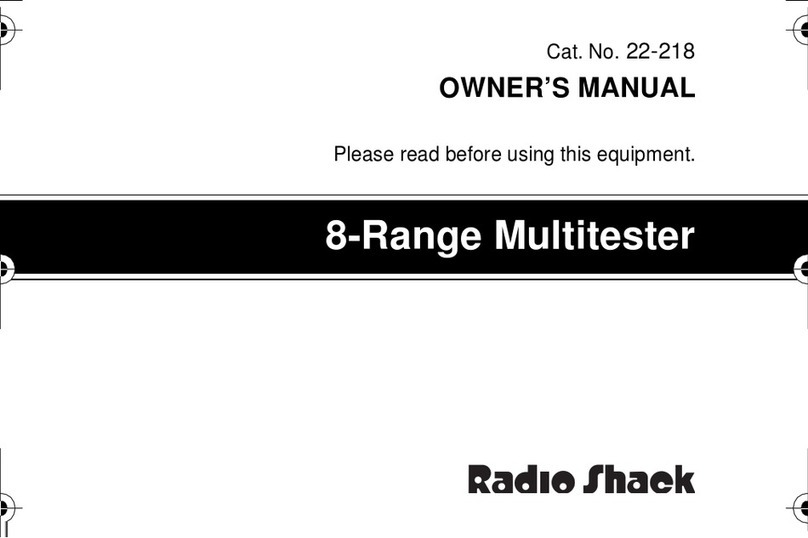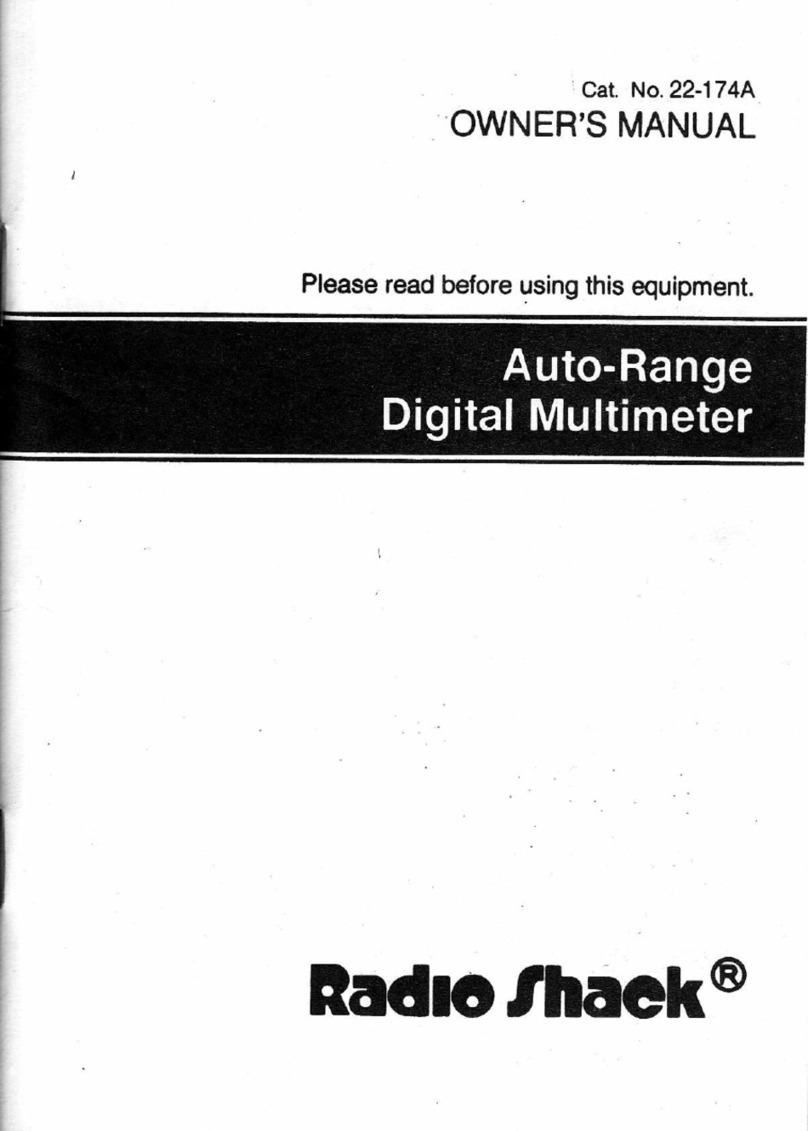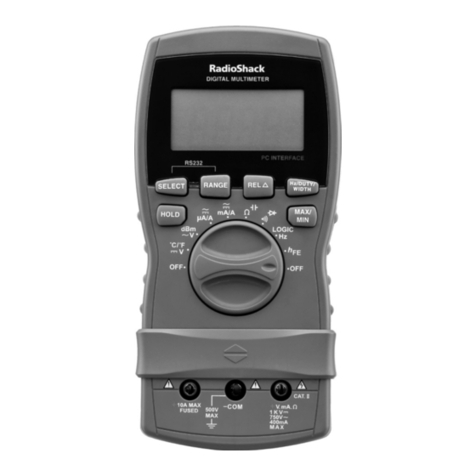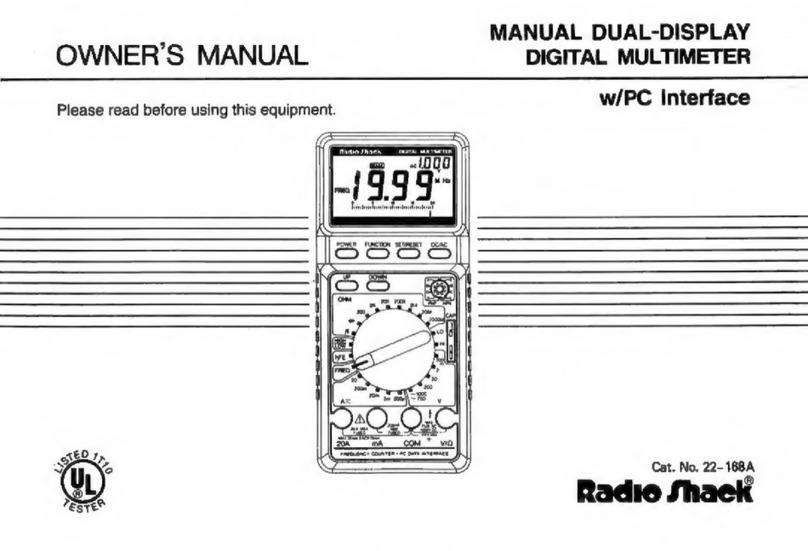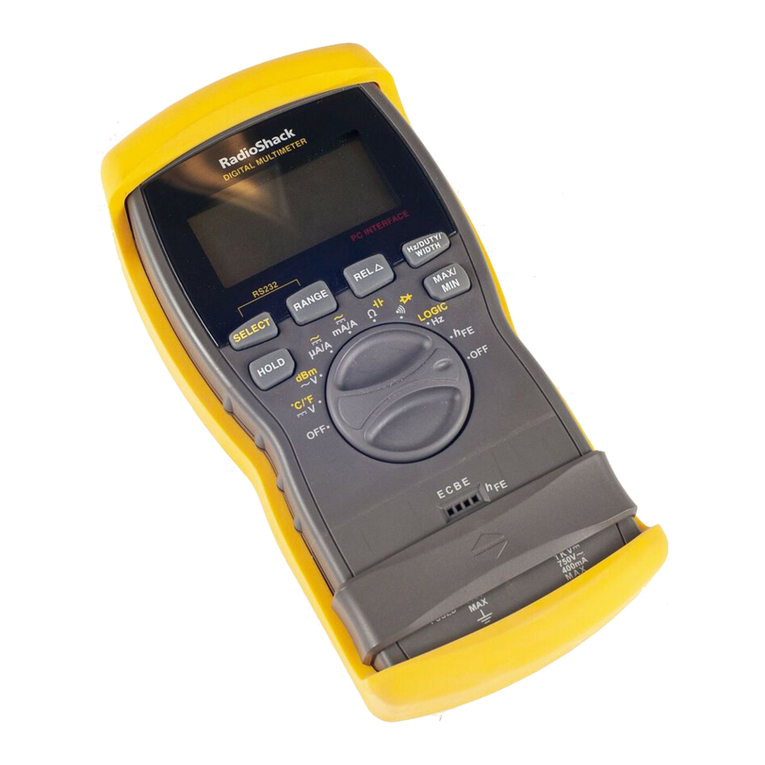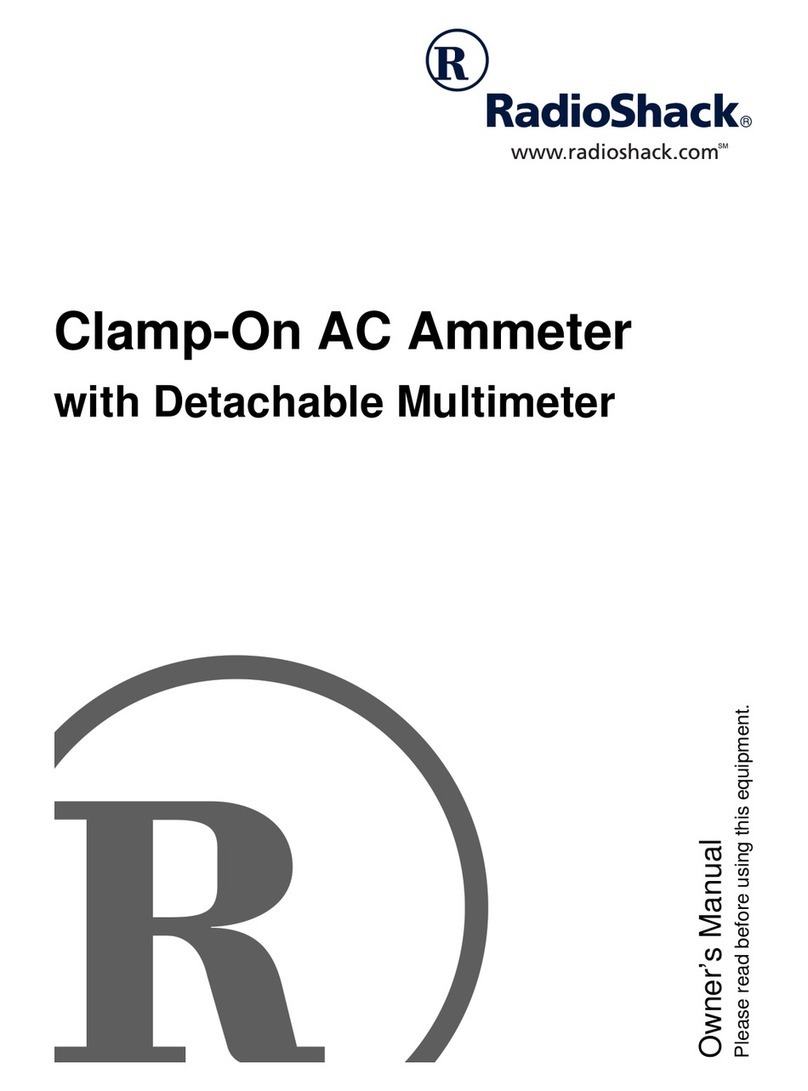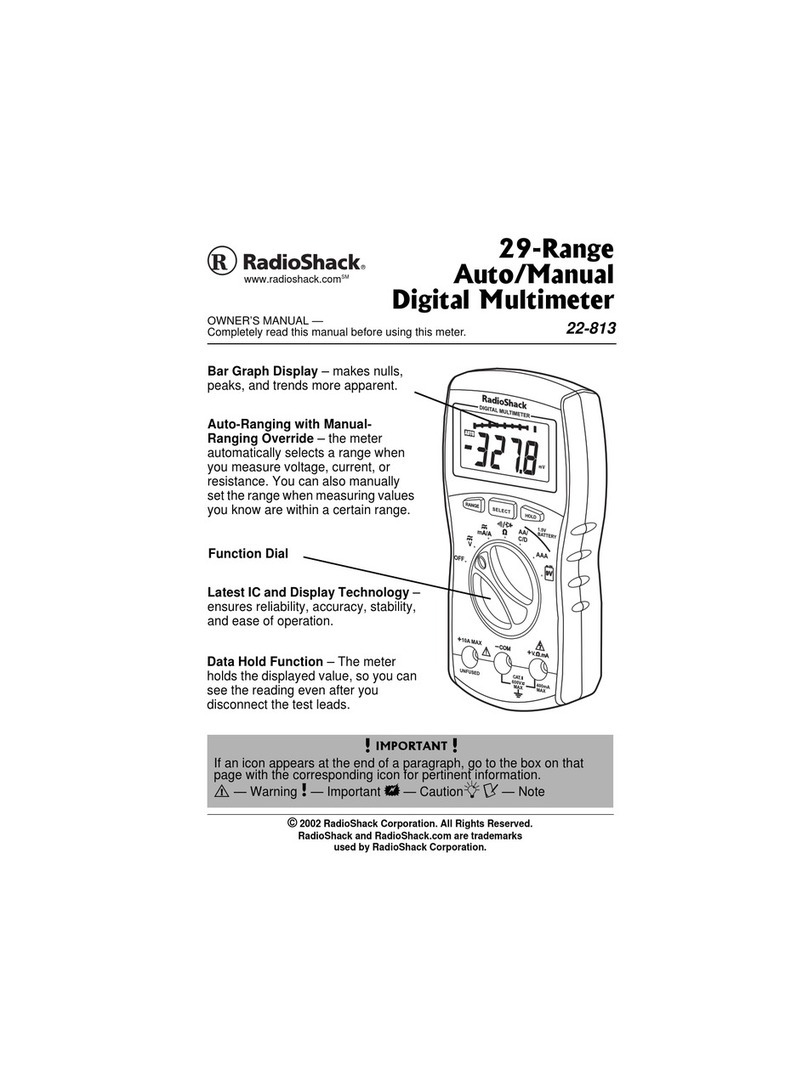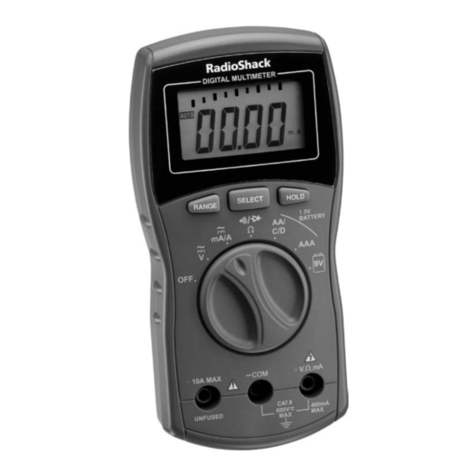
4Features
ˆ
Features
Your RadioShack 46-Range Digital
Multimeter is a portable, compact,
auto-ranging, digital multimeter. It is
ideally suited for field, lab, shop, and
home applications. The multimeter
provides precise measurements and
is built to provide the highest possible
reliability. The meter measures volt-
age up to 1000V DC and 750V AC,
DC and AC current up to 10A, resis-
tance up to 40MΩ, capacitance from
0.5nF to 40µF, and frequency from
10Hz to 4MHz. Its 33/4-digit digital
display can display up to 4,000 units.
Important:
• Completely read this manual
before you use this meter.
• If you are not familiar with meters
and testing procedures, we sug-
gest you read
Using Your Meter
(Cat. No. 62-2039, not supplied)
before you use this meter.
METER FEATURES
Auto-Ranging with Manual-Ranging
Override — automatically selects a
range when you measure voltage,
current, resistance, capacitance, and
frequency. You can also manually set
the range when measuring values
you know are within a certain range.
Computer Interface with Supplied
Software — you can connect the
meter to your computer and use the
supplied software to log and graph
measurements.
Diode Check Function — safely
checks semiconductor junctions for
open, short, or normal.
h
FE Check Function — measures
the gain (
h
FE) of small-signal, bipolar
transistors.
Logic Function — you can use the
meter to test HI and LO logic levels.
Auto-Polarity Operation — protects
your meter and gives valid measure-
ments when you connect the leads in
reverse polarity.
Data Hold Function — holds the dis-
played value, so you can see the
reading even after you disconnect the
probes.
Low Battery Indicator — shows
when you need to replace the battery.
Auto Power Off — the meter turns
itself off after about 30 minutes if you
do not change any setting, helping
conserve battery power.
Note: The meter does not turn itself
off if you set it to use with a computer.
See “Using the Meter With a Comput-
er” on Page 28.
High-Speed Sampling — ensures
quick, reliable measurements.
Protective Rubber Boot — protects
the meter from damage.
